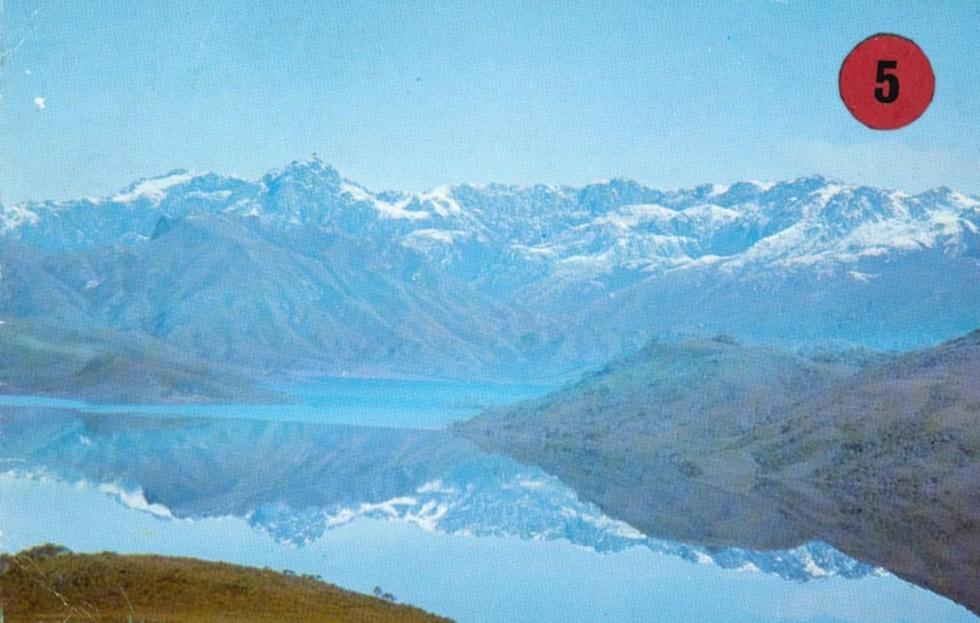


Aboriginal and Torres Strait Islander people should be aware that the National Archives' website and collection contain the names, images and voices of people who have died.
Some records include terms and views that are not appropriate today. They reflect the period in which they were created and are not the views of the National Archives.




[Page 1. This page is an image. It contains an image of snow-capped mountains in the background, against a light blue sky, with a lake in the foreground. The mountains are reflected in the lake. There is a red circle with a bold number '5' in black at the top right corner.]
[Page 2.]
Reflections on the new enlarged Lake Pedder.
Two pictures of the Serpentine Valley – before and after flooding – which form part of the Gordon River Power Development.
[Large Bold text:] SEASON’S GREETINGS
THE HYBRID-ELECTRIC COMMISSION, TASMANIA
[Page 3. This page is an image. It shows two women overlooking a grassy plain. There are mountains in the background, against a cloudy sky.]
This card, produced by the Tasmanian Hydro-Electric Commission (HEC) in 1973, offers 'Season's greetings' and presents two photographic views: one is of two women on an elevated rocky area overlooking a grass-covered plain but with no water in the scene; the other view shows snow-capped mountains reflected in a stretch of water. The caption reads: 'Reflections on the new enlarged Lake Pedder. Two pictures of the Serpentine Valley – before and after flooding – which form part of the Gordon River Power Development'.
Learn how to interpret primary sources, use our collection and more.
